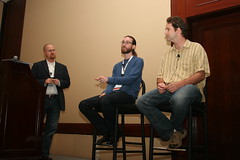I write a weekly column on marketing, technology and analytics in highly competitive lead generation business of real estate for Inman News.
One of the fun things about doing the column is looking at new tools and technology. Even more fun is determining how these tools might be used to generate revenue either directly or through learning more about target audiences.
Here are three articles about tools that you might find useful, even if you’re not in a lead generation business model.
Keep in mind that all of these tools are in some form of beta so yourileage may vary. But if you ever wished you had started using something early on, now’s your chance.
Cotweet
Everyone loves short-form publishing platform Twitter these days. If you are trying to manage multiple Twitter accounts, looking to schedule posts, and are looking for a Tweetdeck-like search then Cotweet might be worth learning to use.
CoTweet: teaming up on Twitter
Foursquare
Here’s a fun game that combines Twitter and text messaging with exploring your city. Still very much in its infancy, Foursquare is pretty focused on nightlife and gathering info about fun places in specific locations. If your business is very “local” focused (and especially if your business is in the restaurant/club/hospitality industry) Fousquare might be worth a look.
Taking social media beyond square one
Google infrastructure update
When you look at your traffic reports chances are good that the site delivering you the most visitors is Google. Learn about the upcoming infrastructure changes at the most-used search engine.
Decoding change in Google search results









